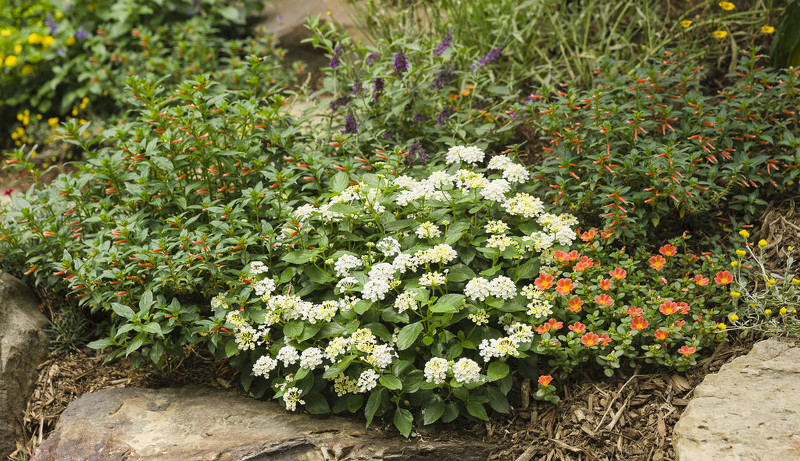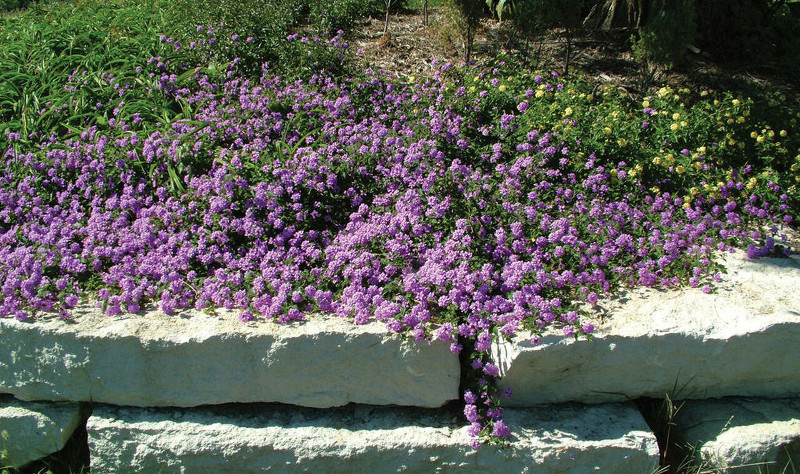If you want to add amazing color and life to your garden, plant Lantana (Lantana Camara). They are easy to grow and have a very long bloom time. Depending on your growing zone they can be planted as an annual or perennial. They also do well in containers and hanging baskets. Butterflies and hummingbirds go crazy for their bright multicolored flowers. Your garden will become a haven for pollinators.

These verbena type flowers are a gardeners favorite because once established they are easy to care for. They also make nice additions to containers and hanging baskets. As a ground cover in the right growing zone they can quickly cover an area and work well on hillsides and sloping areas of your yard. Here are some tips for planting and growing healthy lantana plants
What You Need To Plant Lantana
- Shovel
- Compost or fertilizer
- Garden spade
- Garden clippers
- Watering Can
Where to Plant Lantana
Lantanas love a bright sunny location. Watch your yard for a few days and make sure the spot you have chosen gets at least six hours of full sunlight each day. It is fine to have a bit of shade in the late afternoon, especially in warmer climates. Also lantanas need well draining soil. Most plants do not like to have wet roots.
A simple test is to dig a hole, fill it with water and see how quickly the water drains away. You will want to do this several times to make sure your chosen spot has good drainage. If not you can amend the soil with some gravel or hard bark or simply choose a different location.
Lantanas do well in most soil conditions but they prefer slightly acidic soil. You can perform a simple soil test using pH strips. A home test that also works is to fill a jar with some soil and add a bit of baking soda to the mix, then add water. If the soil bubbles, it is acidic. You can also amend your soil with additives and mulch. Pine needles work well to add acid to the soil if they are available in your yard.
Lantana Plant Spacing
Lantanas love to spread out so keep that in mind when planting them as a ground cover. They can grow as tall as three feet high and spread out as far as eight feet. Read your plant information as it will give you valuable information on the variety of lantana you are planting. Plan for mature plants. Most people plant their lantanas 2 feet apart. It usually takes three years for a well established plant.

If you live in a cooler climate you may want to space your plants closer together. Especially if you are growing it as an annual plant. If you are using your lantana as a ground cover you will want to mulch around the young plants until they fill in. Mulch helps retain water which young plants need more of and also keep weeds out.
Steps To Plant Lantana
Dig a hole a few inches wider than the container your plant came in. Loosen the root ball and plant your lantana at ground level. Water your newly planted lantana regularly until established. Lantanas are easy to grow and really do not require a lot of maintenance. A good soaking once a week keeps them thriving.
It is not required but a light dose of compost or fertilizer in the spring will help with plant growth. Just be careful to not over-fertilize or this could cause the plant to grow but not produce as many flowers. Spring time is the best time to plant lantana.

Step 1 - Choose a sunny location with well draining soil.
Step 2 - Dig a hole the size of your plant container.
Step 3 - Remove the lantana from the container and place in the hole. Lightly mix in some general plant fertilizer or compost.
Step 4 - Fill in the hole and water deeply. Keep the area moist until the plant is established.
Step 5 - To encourage growth, cut or dead head any spent blooms.
When to Plant Lantana
The best time of year to plant lantana is in the early spring. Plant new plants when temperatures are cooler and try to avoid the heat of the day. The late afternoon works best as the plant can recover overnight before being in direct sunlight.
Depending on your growing zone you may be able to plant during other seasons. Check your variety and plant information.
Take extra precautions if planting during not optimal times
Transplanting Lantana
You can transplant your lantanas with some special care. Springtime or Autumn is the best time to do this and make sure the weather is cool. You do not want to move plants during times of extreme heat. You will also have to water your plants well until they are established again in their new spot. To encourage new plant growth it is a good idea to periodically deadhead or cut off spent flower blooms.
If your plant seems overgrown, you can cut back your plant with a heavy pruning. Just make sure you do not cut away too much of the plant as it needs new growth to thrive and be healthy. A good rule of thumb is to leave at least a third of the plant. The best time of year to cut back your plants and prune them is in the spring. Always cut away damaged or broken parts of the plant.
Propagating or growing new plants from cuttings is easy. Simply cut off a section of new growth and remove the lower leaves. Plant in a seed starting mix, one that is well suited for young plants. You can also place cuttings in a jar of water and plant in soil once roots have formed and are about two inches long.
Lantanas are also self seeders and you can try and save seeds to start more young plants. However starting new plants this way may not result in the exact same plant. The preferred method is stem cuttings if you want an exact match and more of your existing plants.
 |
Author Janice Cox - Published 12-15-2021 |
